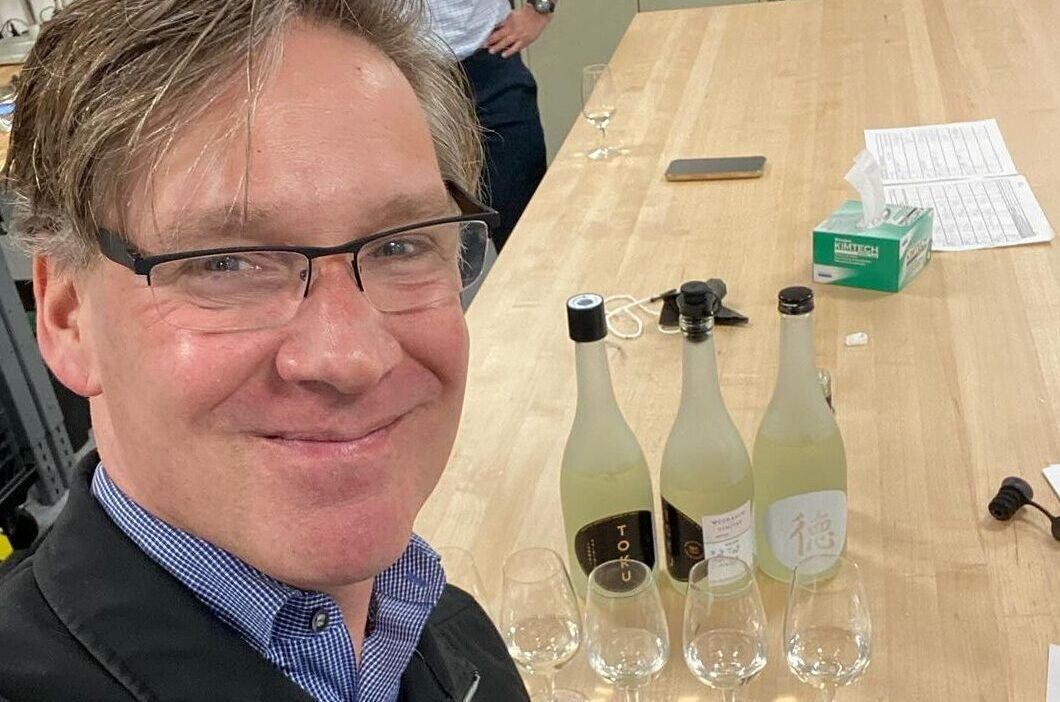Tio Pepe’s, Helen Yates felt that using the Coravin Pivot provides an opportunity to ‘bring sherry off the back-bar’ and give consumers an experience of a Fino sherry more closely to how it should be,” writes Sharples
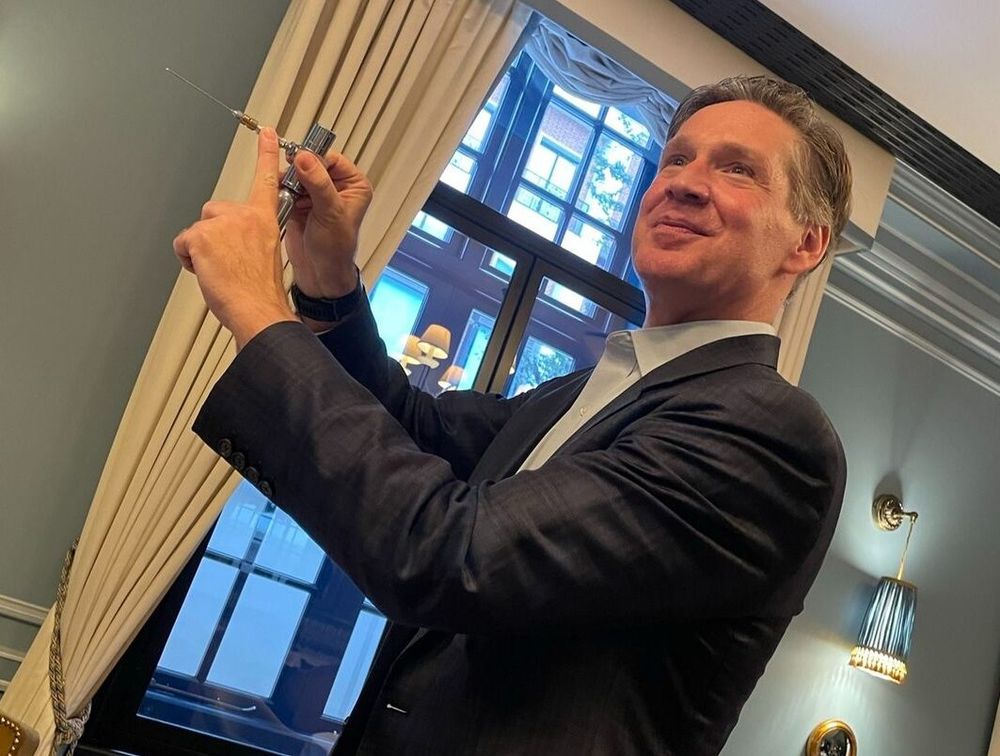
Coravin inventor and founder Greg Lambrecht with ‘the wine mosquito’, a Coravin prototype. November 2023.
For the past ten years Coravin has arguably been the pinnacle of wine preservation systems across the industry. Its clever cork-piercing needle and use of argon gas has provided a valuable means for restaurateurs, wineries, and consumers alike, to extend the life of a bottle of wine; allowing the wine to be opened without uncorking or unscrewing the cap. This technology helps in reducing waste and, more importantly, offering cost savings and margin retention. It has undeniably revolutionised the wine industry. Now, Coravin is finding new applications for other beverages that can suffer from oxidation or ‘flatness’.
Coravin was launched into the market in 2013 (with the initial idea and prototype formulating in 1999). The raison d’etre of inventor and founder Greg Lambrecht was to be able to drink what you wanted and when – with no pressure to finish the bottle. Since the launch, two further systems have been introduced with different applications:
- the sparkling preservation system which uses CO2 and fits half, bottle, and magnum formats and,
- the “Pivot” system whereby the cork or stopper is replaced with a Pivot Stopper – creating a new application for non-cork closures; with vinolok/glass stoppers, sherry, and sake as a starting point.
(Screwcap bottles have already been addressed with self-sealing silicone screwcaps that the needle punctures; Coravin states they can withstand up to 50 punctures and preserve the wine for up to three months).
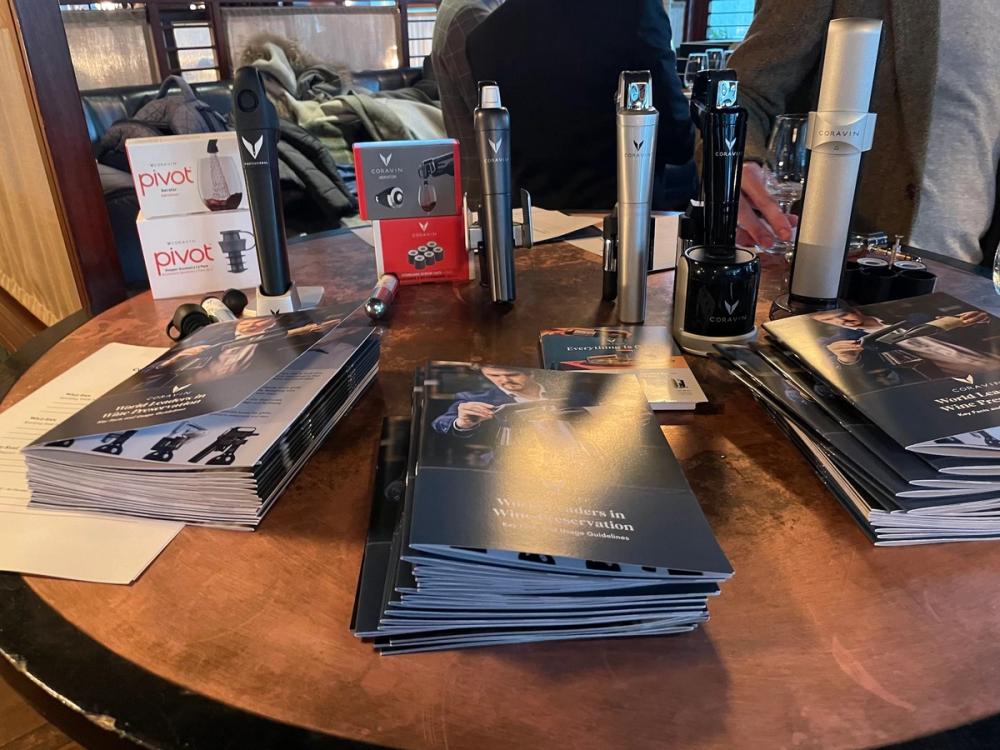
The full take-home Coravin range
Continuing his disruptive approach, and determined to apply the technology to greater applications, Lambrecht has now, after 18 months of research and development, created another product Coravin Vinitas. This product fractionalises wine breaking down a 750 ml bottle to seven 100ml sample sized bottles. The 100ml units should have a shelf life of one year.
This again appears to be another game-changer for the industry. Lambrecht believes Vinitas has the potential to revolutionise single serve wine preservation be it for educators, online tastings, wine clubs or those who are drinking less and more diversely.
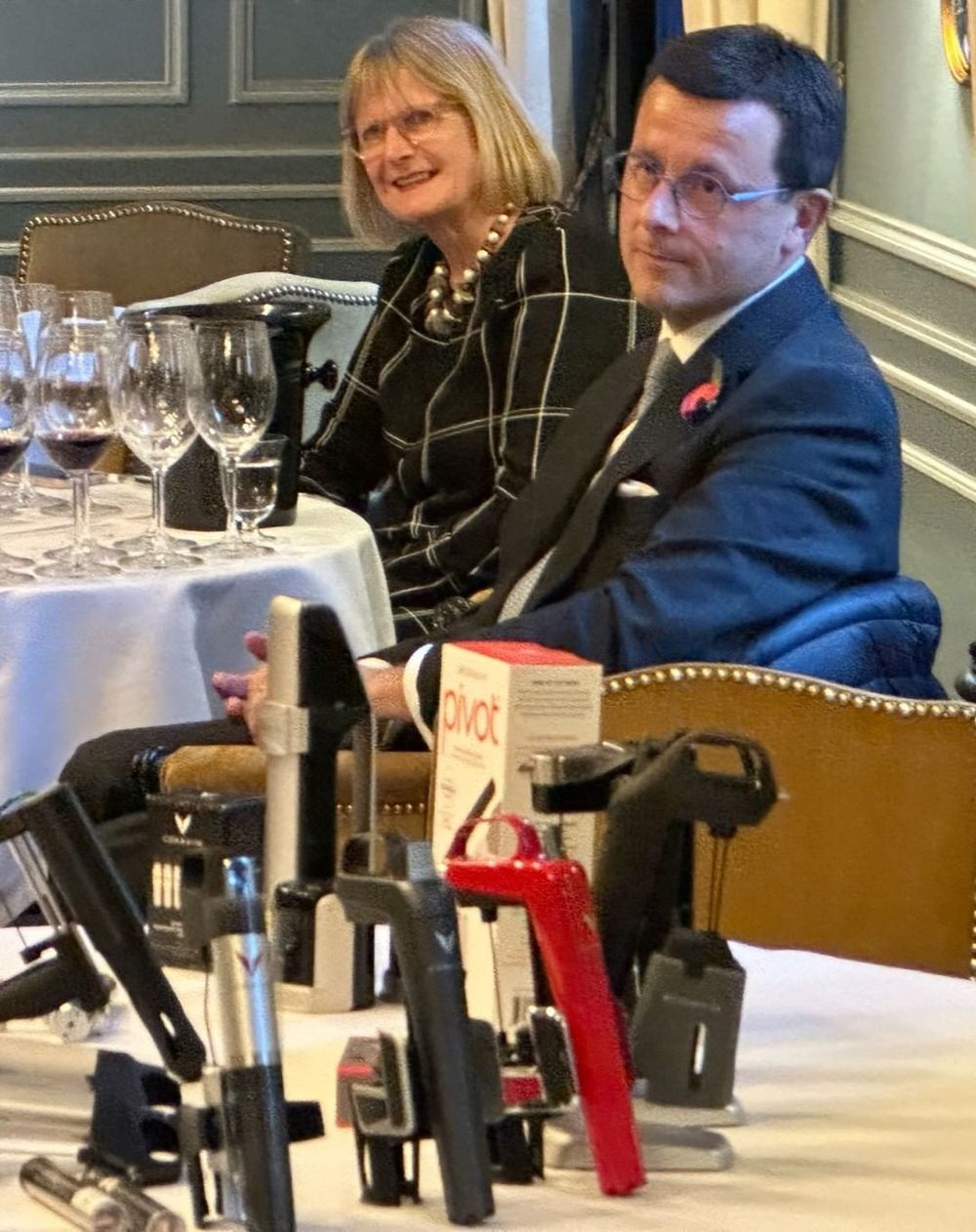
Jancis Robinson OBE has always been a big fan of Coravin, seen here with Frederic Brugues from Sketch at the 10 year celebration
Putting Coravin to the test in London
On a recent visit to London, Lambrecht was on hand to share trial results and the ongoing work Coravin has been undertaking with beverage manufacturers. The multi-category tasting project evolved almost organically, stemming from existing customers and non-wine brands expressing interest in the technology. These new trials and testing, use the same methodology as originally undertaken with wine, albeit over a shorter timeframe.
Taking part in this first public demonstration of pre-accessed samples was Gonzalez Byass sherries, Wachstum König juices, Wild Idol AF Sparkling Rosé and Thomson & Scott Noughty, the leading non-alcoholic wine brand.
To put the London event into perspective, it is key to understand the objective of Coravin; namely, it is to reduce air contact or oxidation with the contents of the bottle. It does not protect against vibration, light or temperature. As Lambrecht pointed out, there are three questions:
- do the wines taste as if they have been opened for a week or two, i.e. are they oxidised or flat in any way?
- would you serve them to a guest or friend?
- are there any differences that are greater than bottle variation?
In other words, the goal is to see if the wine is drinkable, not oxidised, nor flat and servable – that is the ‘pass’ test. Lambrecht acknowledges, “That is the best thing we can do.”
Over a quarter of a billion glasses of wine have been served through Coravin. Given such numbers, one could argue that a Coravin tasting would not be right without tasting wines that had been under Coravin! With assertions that wine under Coravin can remain ‘perfectly preserved in the bottle for weeks, months or even years’ this was a suitable opportunity to address that ‘elephant in the room’.
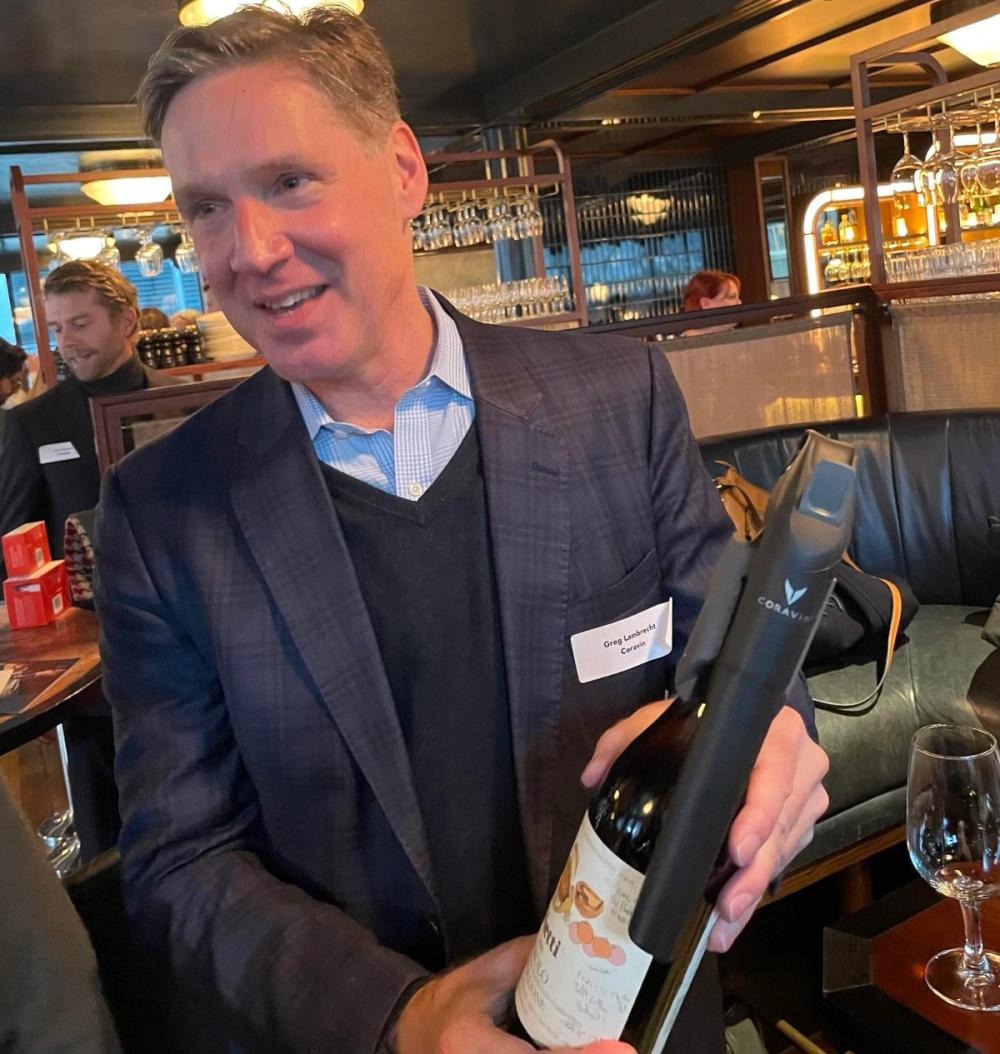
Greg with pre-accessed Vietti Barolo, January 24, 2024
Sensibly, Lambrecht piqued the event’s interest by bringing a series of bottles from his personal cellar that had been ‘accessed’ via Coravin multiple times over the past ten years. Of greatest interest was a 2008 Viette Barolo that had several hand-written dates on the label indicating where and when the wine had been accessed. Originally accessed in 2013, then ‘14 and ‘15, there were two bottles for attendees to try. Had it changed? Without a control bottle we can’t be sure, however, there was no obvious oxidation, and it was enjoyable, showing balance and freshness. Thereby, the wine fulfilled the objective – there was a clear extension of the lifespan of an accessed bottle, and it showed no sign of oxidation or flatness.
The non-wine manufacturers present showed products that had been previously ‘accessed’. The date of access varied across the products up to four weeks ago, with several showing a control bottle, i.e. a newly opened bottle, for comparison. The categories ranged from no and low alcohol (Wild Idol and Noughty), sherry (Tio Pepe), sake (Toku Saké) and high-quality fruit juices (Wachstum König) i.e. all products that deteriorate over time.
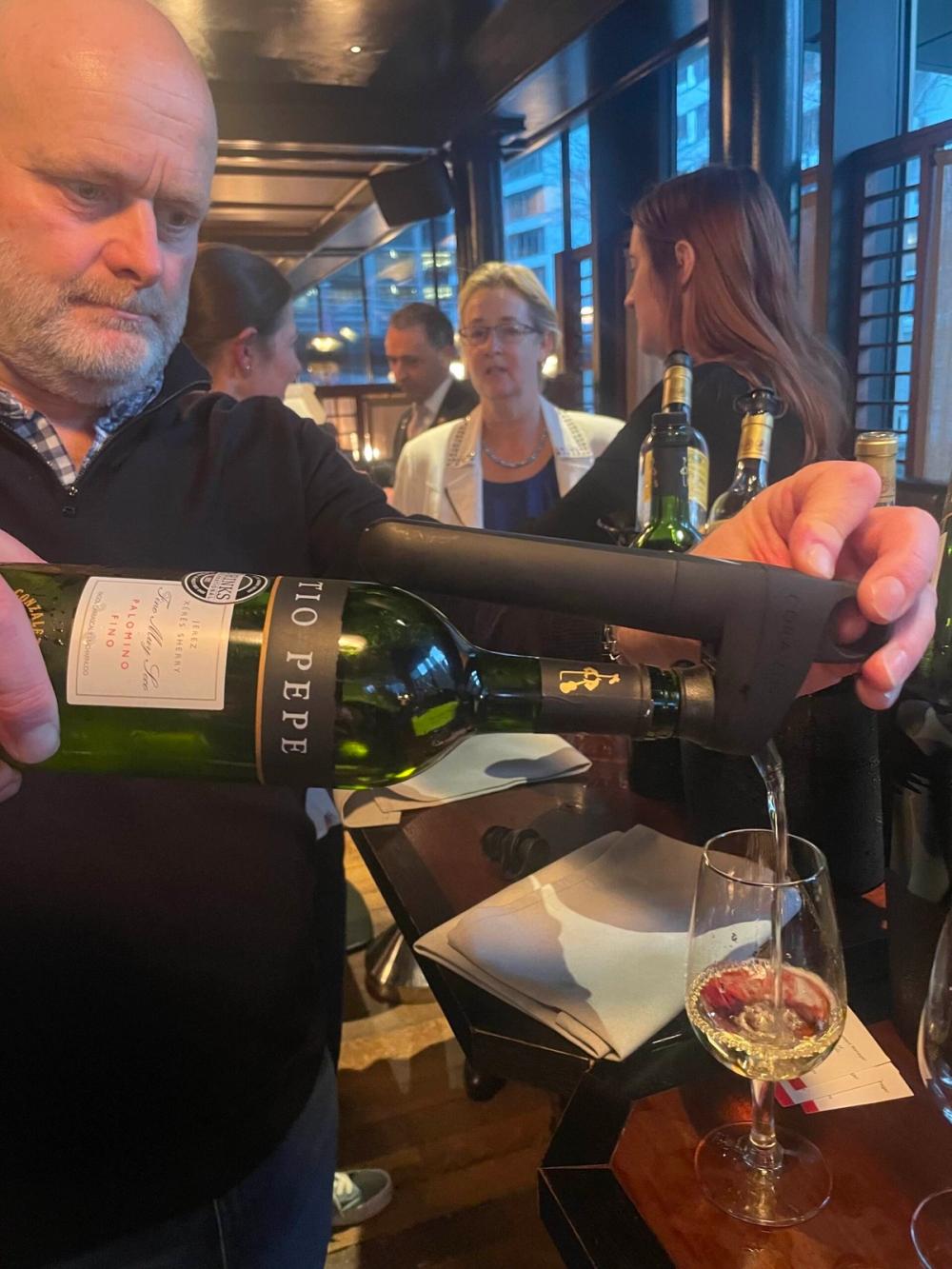
Where a control bottle was available to compare, some differences were apparent however, what is more pertinent, and sits with Coravin’s objective, where there were no control bottles, one could only judge whether the product seemed flat or oxidised. Many showed well, however a couple showed signs of some oxidation and flatness. In fairness, those still showed more freshness than if they had been open for 4 weeks.
The various producers were trialling the most appropriate Coravin product for their beverage. On the day senior brand manager of Tio Pepe, Helen Yates noted the trial was an interesting test, she felt that using the Coravin Pivot provides an opportunity to ‘bring sherry off the back-bar’ – and to give consumers their first experience of a Fino sherry more closely to how it should be. Whatever uses Coravin finds beyond the wine industry, the event seems to be a promising start for the expansion of Coravin’s approach to beverage preservation.
